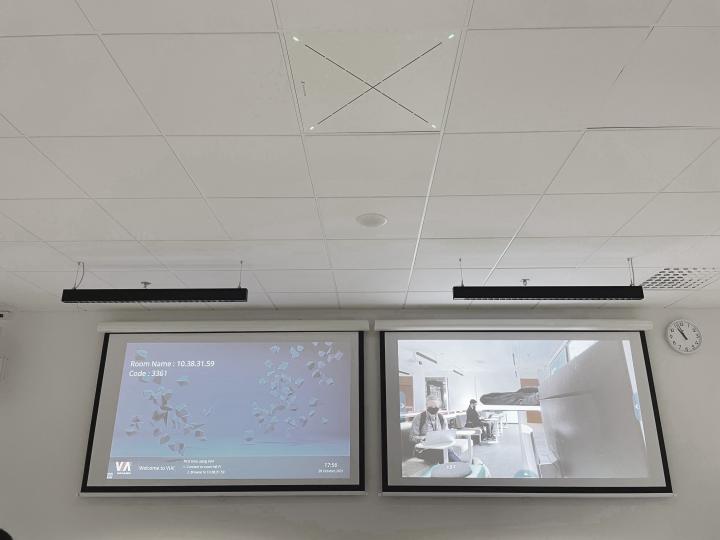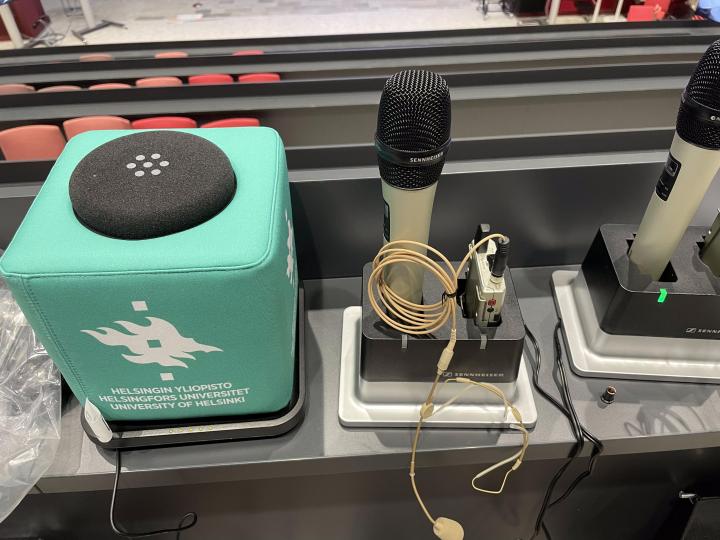It is recommended that the teacher familiarize themselves with the classroom’s AV technology in advance, especially if they are not already familiar with it. It’s useful to test in practice how the room’s microphones and camera can be used with Zoom. With the help of AV support, it is possible to explore the room’s technical setup in advance with guidance.
Classrooms may have very different microphone and camera setups, which can affect how teaching should be conducted in that space. Some rooms may include, in addition to a wireless microphone for the lecturer, a throwable CatchBox microphone for audience questions, ensuring that voices are heard both in the room and by remote participants. Recently renovated teaching and meeting rooms may also feature ceiling microphones, which capture sound from anywhere in the room and are the most effortless to use. These kinds of solutions significantly improve the flow of discussions in hybrid teaching, making it easier to integrate interaction into the session.
Image 2. Ceiling microphone in the Viikki Info Center room K1088
On all campuses, you can request AV support to assist you with using lecture hall technology and to ensure that everything functions properly during your event. A detailed description of AV support services and contact information can be found on Flamma for teaching staff.
Image 3. Throwable Catchbox microphone and wireless microphones for the presenters.

